Asian Small-clawed Otter
- March 21, 2024
- 0 comment
The Asian Small-clawed Otter, also known as Aonyx cinerea, is a captivating mammal found in the freshwater wetlands and coastal regions of Southeast Asia. As the smallest otter species globally, it possesses unique physical traits, including a sleek, water-resistant fur coat and dexterous paws equipped with small claws. These otters thrive in close-knit family groups, displaying intricate social behaviors and cooperative hunting techniques.
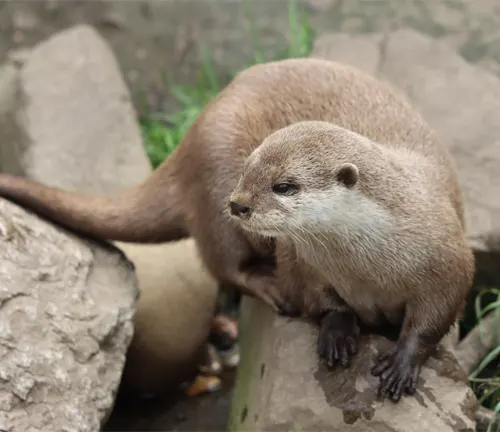
Their diet primarily consists of fish, crustaceans, and amphibians, showcasing their adaptability to diverse aquatic environments. Despite their resilience, Asian Small-clawed Otters face threats from habitat loss, pollution, and illegal wildlife trade. Conservation efforts are underway to safeguard their populations and preserve their vital ecosystems. With their cultural significance and ecological importance, Asian Small-clawed Otters stand as ambassadors for the rich biodiversity of Southeast Asia, captivating the hearts of nature enthusiasts worldwide.
Characteristics Asian Small-clawed Otter
| Characteristic | Description |
|---|---|
| Scientific Name | Aonyx cinerea |
| Common Names | Asian Small-clawed Otter, Oriental Small-clawed Otter |
| Size | 65 to 70 centimeters in length |
| Weight | 2 to 5 kilograms |
| Fur | Dense, sleek, water-resistant |
| Coloration | Light brown to dark brown, with lighter patches on throat and chest |
| Habitat | Freshwater wetlands, mangrove swamps, coastal regions of Southeast Asia |
| Distribution | Thailand, Indonesia, Malaysia, Philippines, and other Southeast Asian countries |
| Social Structure | Extended family groups with monogamous breeding pairs and offspring |
| Diet | Fish, crustaceans, mollusks, amphibians |
| Reproduction | Breeding during monsoon season, litters of 2 to 6 pups, both parents involved in nurturing |
| Conservation Status | Not currently endangered but faces threats from habitat loss, pollution, and illegal wildlife trade |
| Conservation Efforts | Habitat restoration, community-based conservation programs, enforcement of wildlife protection laws |
| Cultural Significance | Symbolic importance in Southeast Asian cultures, featured in folklore and mythology |
| Threats from Human Activities | Habitat destruction, pollution, poaching, unsustainable fishing practices |
| Role in Ecosystem | Apex predator, helps regulate prey populations, maintains health of aquatic ecosystems |
A Marvel of Nature
The Asian Small-clawed Otter, scientifically known as Aonyx cinerea, is a fascinating mammal belonging to the Mustelidae family, which also includes weasels, badgers, and minks. Unlike its larger cousins, this otter species possesses unique characteristics that distinguish it from the rest. In this article, we’ll delve into the world of the Asian Small-clawed Otter, exploring its physical traits, habitat, behavior, conservation status, and its interactions with humans.
Physical Characteristics
Size and Weight
The Asian Small-clawed Otter is the smallest otter species globally, measuring approximately 65 to 70 centimeters (25 to 28 inches) in length on average. In terms of weight, these otters typically range from 2 to 5 kilograms (4.4 to 11 pounds). Despite their diminutive stature, they exhibit remarkable agility and adaptability in their aquatic habitats.
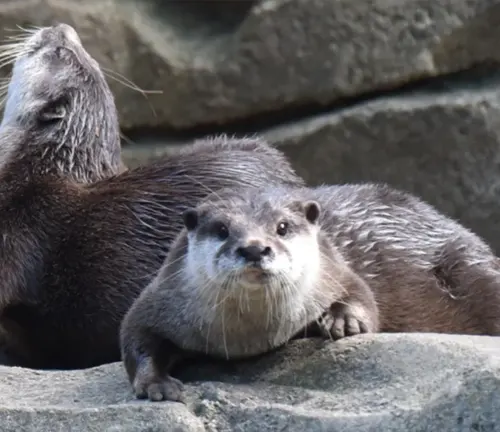
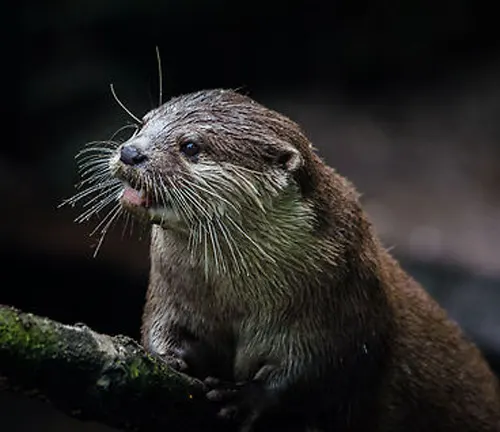
Fur and Coloration
The fur of the Asian Small-clawed Otter is dense, sleek, and water-resistant, essential for maintaining warmth and buoyancy in their aquatic environment. Their fur coloration varies from a light brown to a dark brown hue, often with lighter patches on their throat and chest. These lighter patches may vary in intensity among individuals and populations but serve as distinctive markings on their otherwise uniform fur coat.
Habitat and Distribution
Habitat
Asian Small-clawed Otters primarily inhabit freshwater wetlands, mangrove swamps, and coastal regions across Southeast Asia. They are highly adaptable to various aquatic environments, including slow-moving rivers, streams, and brackish estuaries. These otters rely on abundant vegetation and sufficient prey availability in their habitats for foraging and shelter.

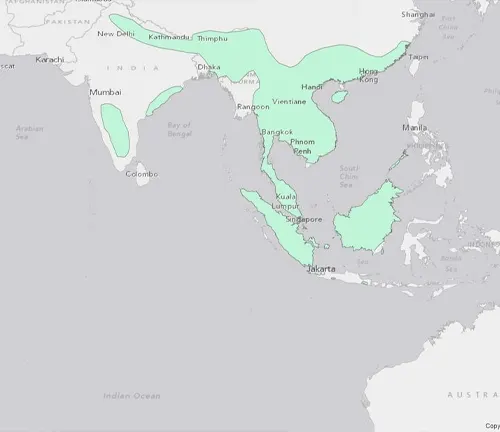
Distribution
The Asian Small-clawed Otter’s range spans across several countries in Southeast Asia, including Thailand, Indonesia, Malaysia, the Philippines, and parts of southern China, Myanmar, and Bangladesh. Within these regions, they occupy a variety of freshwater and coastal habitats, from dense rainforests to urbanized areas. However, their distribution may be fragmented due to habitat loss and human activities, leading to localized populations in some areas. Conservation efforts are crucial to ensuring the preservation of their habitats and maintaining viable populations across their range.
Behavior and Lifestyle
Social Structure
Asian Small-clawed Otters exhibit complex social behaviors and live in extended family groups. These groups typically consist of monogamous breeding pairs and their offspring, forming tight-knit communities. Within these family units, otters engage in cooperative activities such as foraging, grooming, and caring for their young. Strong bonds are formed among family members, contributing to the overall cohesion and survival of the group.
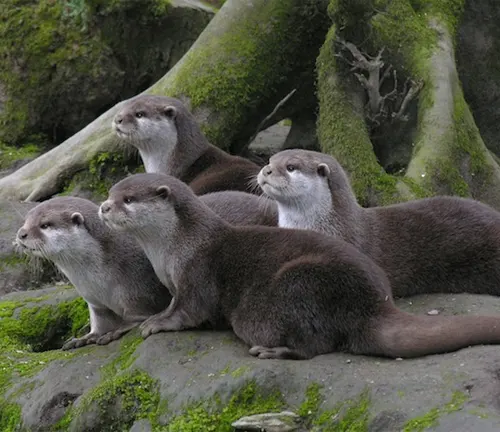
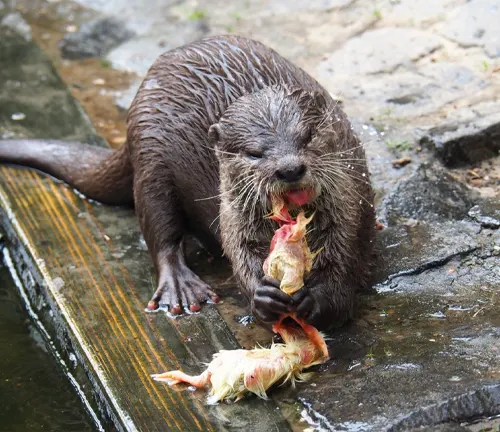
Feeding Habits
Asian Small-clawed Otters are opportunistic feeders with a varied diet. They primarily consume fish, crustaceans, mollusks, and amphibians found in their aquatic habitats. Using their dexterous paws and sharp claws, they hunt for prey both in water and on land. Their agile swimming abilities and adept hunting skills enable them to catch prey with precision, making them efficient predators within their ecosystems.
Reproduction
Breeding in Asian Small-clawed Otters typically occurs during the monsoon season, which varies depending on their geographic location. Females give birth to litters of two to six pups after a gestation period of around 60 to 70 days. Both parents play active roles in nurturing and protecting their young, teaching them essential survival skills such as hunting and social behaviors. Otter pups remain dependent on their parents for several months before gradually becoming more independent as they mature. The family unit provides a supportive environment for the upbringing of offspring, ensuring their well-being and integration into the social structure of the group.
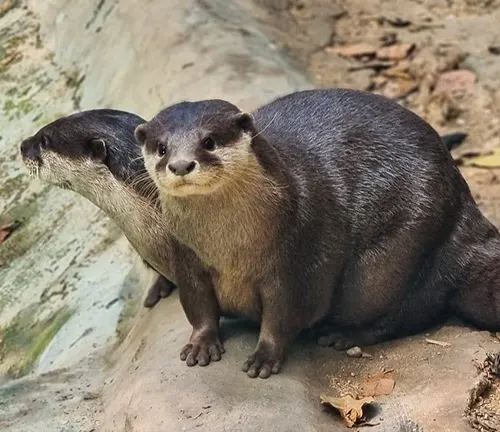
Conservation Status
Threats
Asian Small-clawed Otters face numerous threats to their survival, primarily stemming from human activities and habitat degradation. Habitat loss and fragmentation due to deforestation, urbanization, and agricultural expansion are significant threats, depriving otters of essential wetland and coastal habitats. Pollution from industrial runoff, agricultural pesticides, and plastic waste contaminates their water sources, affecting both water quality and prey availability. Additionally, illegal wildlife trade poses a grave threat, with otters often captured for the exotic pet trade or their pelts.
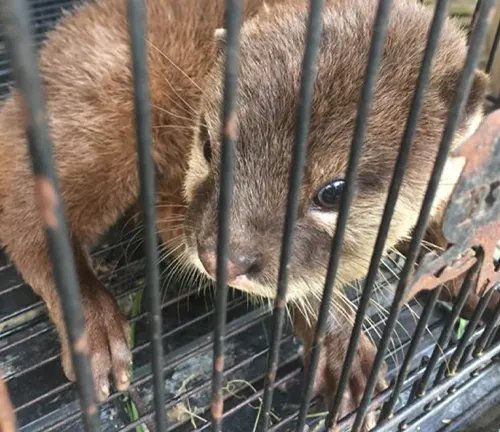
Conservation Efforts
Conservation organizations and governmental agencies are implementing various initiatives to protect Asian Small-clawed Otters and their habitats. Habitat restoration projects aim to rehabilitate degraded wetlands and mangrove forests, providing essential breeding and foraging grounds for otters. Community-based conservation programs engage local communities in otter monitoring, research, and habitat protection, fostering a sense of stewardship among residents. Strict enforcement of wildlife protection laws, including bans on hunting, trading, and keeping otters as pets, helps deter illegal activities and safeguard otter populations. Public education and outreach efforts raise awareness about the importance of otter conservation and the need for sustainable practices to protect their habitats and ensure their long-term survival. Collaboration between government agencies, conservation organizations, and local communities is essential for implementing effective conservation strategies and securing a brighter future for Asian Small-clawed Otters in the wild.
Interactions with Humans
Cultural Significance
Asian Small-clawed Otters hold symbolic importance in many Southeast Asian cultures, where they are often depicted as playful and intelligent creatures in folklore, mythology, and traditional art. In some indigenous beliefs, otters are revered as guardians of water bodies and symbols of prosperity and abundance. Their presence in local narratives reflects the deep cultural connection between humans and otters, highlighting their role as integral components of regional heritage and identity.
Threats from Human Activities
Despite their cultural significance, Asian Small-clawed Otters face numerous threats from human activities. Habitat destruction and fragmentation due to urbanization, agriculture, and infrastructure development deprive otters of essential wetland and coastal habitats, limiting their range and access to prey. Pollution from industrial runoff, agricultural pesticides, and plastic waste contaminates their water sources, posing risks to both otters and their prey. Illegal wildlife trade for the pet and fur markets further exacerbates threats, with otters often targeted for capture and trafficking. Unsustainable fishing practices, such as the use of illegal nets and traps, also contribute to otter mortality and population decline. Addressing these threats requires concerted efforts to mitigate human impacts on otter habitats, enforce wildlife protection laws, and promote sustainable practices that support coexistence between humans and otters. By addressing the root causes of these threats and fostering greater awareness and appreciation for otters and their ecosystems, we can work towards ensuring a brighter future for Asian Small-clawed Otters and their habitats.
Different Species
The Asian Small-clawed Otter, scientifically known as Aonyx cinerea, is a singular species within the genus Aonyx. There are no recognized subspecies of the Asian Small-clawed Otter.
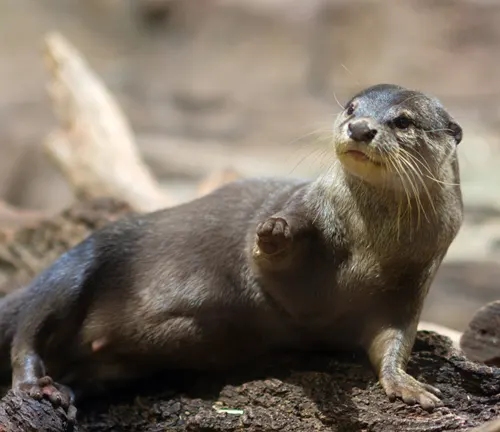
Frequently Asked Questions (FAQs)
- Are Asian Small-clawed Otters endangered?
While not currently classified as endangered, Asian Small-clawed Otters face threats from habitat loss, pollution, and illegal wildlife trade. Conservation efforts are crucial to ensuring their continued survival. - What do Asian Small-clawed Otters eat?
Asian Small-clawed Otters primarily feed on a diet consisting of fish, crustaceans, mollusks, and amphibians. They are opportunistic hunters, utilizing their agile paws and sharp claws to catch prey. - Where do Asian Small-clawed Otters live?
These otters inhabit freshwater wetlands, mangrove swamps, and coastal regions across Southeast Asia, including countries like Thailand, Indonesia, Malaysia, and the Philippines. - How do Asian Small-clawed Otters communicate?
Otters use a variety of vocalizations, including chirps, whistles, and growls, to communicate with each other within their social groups. They also rely on scent marking and tactile interactions to convey information. - What is the breeding behavior of Asian Small-clawed Otters?
Breeding typically occurs during the monsoon season, with females giving birth to litters of two to six pups. Both parents actively participate in nurturing and protecting their young, teaching them essential survival skills. - Can Asian Small-clawed Otters be kept as pets?
While some may find them adorable, otters are wild animals with specialized needs and behaviors unsuitable for domestication. Keeping them as pets is illegal in many countries and can lead to negative consequences for both the otters and their owners. - What role do Asian Small-clawed Otters play in their ecosystems?
As apex predators, otters help regulate prey populations and maintain the health of aquatic ecosystems. Their presence contributes to biodiversity and ecosystem stability. - What are the main threats to Asian Small-clawed Otters?
Asian Small-clawed Otters face threats from habitat loss, pollution, and illegal wildlife trade. Destruction of mangrove forests and wetlands, pollution from agricultural runoff, and poaching are significant concerns. - How can individuals contribute to otter conservation?
Individuals can support otter conservation efforts by raising awareness, participating in volunteer programs, and advocating for the protection of their habitats through sustainable practices and policies. - Are Asian Small-clawed Otters solitary animals?
No, Asian Small-clawed Otters are highly social animals that live in extended family groups. These groups typically consist of monogamous breeding pairs and their offspring, engaging in cooperative behaviors such as foraging and grooming.





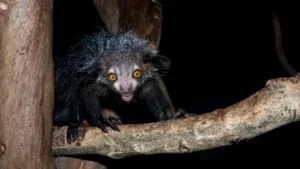
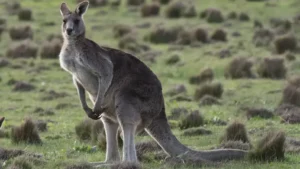







Leave your comment